International Journal of Aquaculture and Fishery Sciences
An overview on hydro-biology and management of Kaptai Lake Fisheries, Bangladesh
Rabina Akther Lima1*, Azhar Ali2, Md Khaled Rahman3, Md Shoebul Islam1, Md Moniruzzaman4 and Tamina Akhtar Tamanna5
2Bangladesh Fisheries Research Institute, Freshwater Sub-station, Saidpur-5310, Bangladesh
3Bangladesh Fisheries Research Institute, Riverine Sub-station, Rangamati-4500, Bangladesh
4Bangladesh Fisheries Research Institute, Riverine Station, Chandpur-3602, Bangladesh
5Department of Fisheries, Tangail, Bangladesh
Cite this as
Lima RA, Ali A, Rahman MK, Islam MS, Moniruzzaman MD, et al. (2023) An Overview on hydro-biology and management of Kaptai Lake Fisheries, Bangladesh. Int J Aquac Fish Sci 9(3): 029-039. DOI: 10.17352/2455-8400.000089Copyright License
© 2023 Lima RA, et al. This is an open-access article distributed under the terms of the Creative Commons Attribution License, which permits unrestricted use, distribution, and reproduction in any medium, provided the original author and source are credited.Kaptai Lake is the largest artificial Lake in Bangladesh. This Lake provides most of the fish stock for the people of the Hill tract. Over the years, due to various anthropogenic and environmental reasons population of Indian Major Carp (IMCs) has declined, and some native species are on the way to extinction in this Lake. Considerable research has been conducted on different aspects of lake fishery with hydrology, culture technology, fish diversity, management, threats, and mitigations, but no such consolidated report on the overall overview is not available on this Lake. This review paper has been prepared to combine all the available information along the information gap, further study of which will be helpful to enhance the Indian major carp catch and sustainable management of fish stock.
Introduction
Kaptai Lake (22°22’-23°18’ N; 92°00’-92°26’E) is one of the major sources of fisheries production in the Chittagong hill tract area. The lake was created in 1961 while damming the Karnaphuli River for generating hydroelectricity [1]. As a consequence of the dam construction and creation of the lake, a large hilly area was submerged resulting in massive changes in the ecosystem [2]. The Lake is “H” shaped, and has two arms joined near the Shubalong, a part of the Karnaphuli river course (Figure 1). The major inflow parts of this Lake are the lower reaches of the Karnaphuli, Kassalong, Chengi, Miyani, and Rainkhyong rivers. The left arm of the Lake, Rangamati-Kaptai is fed by two streams, the Chengi in the North and Rainkhyong in the South. The right arm of the lake is fed by two in-flowing streams, the Kassalong and the Miyani on the Northern side and laterally by the Karnaphuli River [3]. Total area of this lake is 68,800 ha with a water surface area of 58,300 ha [4], average water depth is about 9 meters with maximum depth of 32 meters [1,4]; the water exchange rate is about three times per year and the water level fluctuations vertically 8.1 meters (26.5 feet) per year [1,5] and the water reserve is 524.7 × 106 m3 [6]. The Lake shoreline is rocky, and the bottom is uneven with little clay, except` in the inundated riverbed [3].
According to the fiscal year book 2021-22, the inland open water (capture) fish production of bangladesh was 13,21,631 metric tons (mt). Whereas, kaptai lake comprises about 17,937 (mt), and the catch/area was 261 kg/ha [7]. Kaptai lake contributes to inland fisheries production and the protein demand of the population of the hill tract area. This paper aimed to conduct an extensive literature review in order to systematically evaluate the limnological, biological, and population dynamics and improved culture techniques in kaptai lake. Data were collected from the scientific literature on this lake. This paper may provide useful information to the government for sustainable management of the lake and fisheries researchers for more diversified research to increase production.
Hydrology
The hydrological parameters are primary regulatory components of the ecosystem, which influence reproduction, growth, and food availability [8,9]. For example, fish reproduction is characterized by a cyclic process related to hydrologic variation [8], whereby fish time their spawning with the flood pulse to utilize floodplains for feeding and rearing [10]. Therefore, the study of Kaptai lake hydrology or limnology is an integral part of Kaptai lake research. Details of hydrological studies are ascribed in Table 1.
The water level of Kaptai Lake ranges from 82.7 to 108.4 m during the dry (May) to monsoon (October) season, water velocity was recorded at 7.4 - 45.0 cm sec-1 and turbidity was found between 38 and 212 during monsoon at upstreams. Gross oxygen production was 124.10 and 558.5 g O2m-2yr-1 with an average of 354.00 g O2m-2yr-1. Primary productivity was recorded at 1.17 kgm-3yr-1 [11]. Based on primary productivity, this lake is classified as mesotrophic to eutrophic [6].
Those studies revealed that the water quality of the lake is in a suitable range for fish production. Phosphate concentration was recorded higher in the Rangamati Sadar area than standard level [5]. It indicates the anthropogenic pollution from the surrounding city areas. There is very little work on nutrient analysis and no study on the water pollution index. Moreover, Plankton assemblage in relation to water nutrients has not been studied yet.
Surface and bottom soil quality
Surface and bottom soil quality of soil is an essential ecological factor in an aquatic environment. The mineral constituent of the soil is derived from runoff during floods and rains. Moreover, the soil is the primary source of nutrient content for plants and animals to sustain in an ecosystem. Nutrients are released through the decomposition and mineralization process by soil microbes such as algae, bacteria, fungi, protozoa, etc. Soil also supports bottom-dwelling organisms such as bottom fish, shellfish, benthos, molluscs, etc. Bottom soil showed a higher concentration of ions than shore soil in most cases (Figure 2). A study recorded soil of Kaptai Lake was rich in calcium content (1.3 - 6.8 meq/100 ml), pH (4.7 - 6.1) below productive soil pH (6.5 - 7.5), iron concentration was extremely high (68.5 - 369 μg/L), sulfur, copper, manganese was quite high, sulfur and boron was slightly higher than critical level [12].
Hoque, et al. [13] studied this Lake’s sediment organic matter and physicochemical properties. Their hydrometrical analysis of sediment physical properties found clay, silt, and sand contents are 5.75% - 45.75%, 11.75% - 39.5%, and 35% - 67.5% respectively, and sediment texture spatially varied significantly [13]. Additionally, the ranges for Organic Matter (OM), Inorganic Matter (IOM), Organic Carbon (OC), bulk density, and pH were 4.25 to 8.18%, 91.82 to 95.76%,2.23 to 4.30%,1.72 to 2.48 g/cm3 and 6.25 to 6.62, respectively [14]. This research revealed that due to the difference in sediment properties, sediment was not transported to a high extent from the main reservoir upstream causing sediment trapping and deposition in the main reservoir portion and the Chengi tributary.
Plankton and benthic community
Phytoplankton is the primary producer of an ecosystem. The abundance of plankton indicates the productive status of water bodies [14] whether it is oligotrophic or eutrophic. Numerous studies have shown, a strong correlation between larval fish survival and plankton production, as plankton are the main food of fish. There are some studies on plankton and the benthic community of Kaptai Lake (Table 2). The Kaptai Lake was recorded with 81 genera of phytoplankton, 15 major groups of zooplankton, and 17 groups of microbenthic fauna [6] with the dominance of Melosira, Pediastrum, and Staurastrum, which are the indicators of eutrophic waterbody [12]. Plankton assemblage in relation to water nutrients has not been studied yet.
Status of IMC’s breeding ground in Kaptai Lake
Natural breeding ground is the major source of natural recruitment in a water body. During the monsoon periods, the feeder rivers and the upper reaches of Kaptai Lake become inundated and prevail current. All these factors provide a favorable environment for the natural breeding of major carp. There are some studies for identifying natural breeding grounds in Kaptai Lake [15,16] and finally identified four breeding grounds in this lake [6]. They are:
- Channel Kassalong (Langadu to Miyani mouth and upwards)
- Channel Barkal (Barkal mouth to Jagannathchhari and upwards)
- Channel Chengi (Naniarchar and upwards)
- Channel Reinkhiyong (Bilaichari to Chakrachhari and upwards)
Due to geographical reasons, Kaptai Lake is surrounded by hills, creating bends at various places to form shallow marginal areas with deep pools (locally called kum), which are suspected for carp breeding and feeding grounds (Figure 3) as like as oxbow-bend of natural carp breeding ground Halda river [17,18]. During the rainy season, these marginal areas get inundated with heavy flash floods, causing turbulence and upwelling currents as well as counter-flow currents along the bends, forming a favorable place for carp spawning. Under natural conditions, carp typically undergo hatching during the months of May and June [3]. This coincides with heavy flood water runoff from the upper river, resulting in elevated tides and significant changes in water level, turbidity, and current velocity, which is a common phenomenon for carp spawning.
The loss of natural breeding grounds of carp may be due to some natural and irreversible causes, the natural floodplain habitat has been inundated or lost since impoundment, siltation from agriculture (locally called zoom) and deforestation, the rise of char (silt bed), lack of rainfall and thunderstorms during breeding time, seasonal variations, high fishing pressure, and changes in fish migration [3,19,20].
It is interesting to note that the water level of the Kaptai reservoir has been maintained at lower levels during breeding seasons (June–August) since the start, even though this is detrimental to natural breeding success. Fluctuation of water level and heavy shoreline siltation were identified as major causes of the gradual disappearance of fish species and destruction of natural breeding grounds in the Lewis and Clarke lakes in the USA [21]. The loss of natural breeding grounds for carp may be partly due to the fact that the natural floodplain habitat in which carp previously bred has been inundated or lost since impoundment.
Recent studies showed that Kassalong and Barkal channels are active breeding grounds. During winter, due to heavy siltation, these channels remain almost dead with 4-5 feet water depth respectively. During the study of 2016, almost 95% of fry hatched from collected eggs; among them, Mrigel 29%, Rui 28%, Bata 23%, Catla 12%, and Kalibaush 8% respectively.
Fish fauna community
Bangladesh is blessed with a large number of habitats and they are rich in faunal diversity containing at least 265 species of finfish, 63 species of prawn, and several species of turtles, tortoises, freshwater mussels and other living aquatic organisms [22]. The Kaptai Lake is also rich in different native and exotic species with some crustaceans (Table 3). Rahman, [23] recorded this Lake as the only habitat of halfbeak, Dermogenys pusillus (Von Hasselt) [23].
After the impoundment, two catfishes (Silonia silondia and Bagarius bagarius) were disappeared [6]. In the 1980’s Chinese carps (Hypophthalmichthys molitrix, Ctenopharyngodon idella) common carp, (Cyprinus carpio), Silver barb (Puntius gonionotus) were introduced [3]. An indigenous cyprinid species, Labeo boga (Hamilton) was introduced but no landing was recorded after introduction. Moreover, from this time no Pangasius pangasius landing was recorded. In 1985, two species of Tilapia (Oreochromis niloticus and Oreochromis mossambicus) escaped from a cage culture experiment, and African magur (Clarias gariepinus) was accidentally introduced [24]. Tor tor another indigenous species disappeared in 1985. Redbelly Piranha (Serrasalmus nattereri) was also accidentally introduced in 2008 [3]. Among the introduced species common carp and two species of tilapia have established themselves in this lake through an auto-recruitment process.
Biology of fishes
Fish biology provides knowledge of the life, habits, and behavior of fishes. Without fish biology study, it would not be possible to plan, control, and manage the fisheries resources in a satisfactory manner. Biological research in Kaptai Lake is a prerequisite for constructing a sustainable management protocol.
In 1996 - 1997, a study was done on morphometric and meristic characters of Gudusia chapra and Gonialosa manmina [25]. They identified 21 morphometric and 09 meristic characters. They recorded a wide range of morphometric characters varied within the range of 21.47% to 140.62% in the case of G. chapra, 24.04% to 87.19% in the case of G. manmina and concluded fishes should be specified for a particular geographic region as there is a considerable variation among different geographic location. The Kaptai Lake reservoir is the habitat of 31 commercially important fish species, whereas biological studies on those fishes are very scanty. The reproductive biology of some commercial fishes is referred to in Table 4. There is a scope for studying other commercially important fish reproductive and feeding biology.
Craft and gears
There are six major areas (Kaptai, Rangamati, Suvalong, Naniarchar, Barkal, and Langadu) for commercial fishing [6]; fishermen use different fishing gear and crafts based on their target and non-target species. Two types of crafts, the large country boat (Bara nouka, 10 m - 12 m length, 1 m - 2 m breadth) and the small country boat (Dingi nouka, 6 m - 8 m length, 0.7 m - 1.2 m breadth), and another one Egkaichha nouka (boat from one timber) is used. Sixteen types of gears (Table 5) are used in the Kaptai Lake based on their mode of operation [3].
Developed culture techniques
The Present production of Kaptai Lake is 17,937 MT and a large share of this contribution comes from unwanted species [33]. These low-valued species (Corica soborna, Gonialosa manminna, Gudusia chapra, Chanda nama, Amblypharyngodon mola) and the unwanted fish species (Badis badis, Crossocheilus latius, Esomus danrica etc. small indigenous species) initial production was 3% in 1965/66 to about 92% in 2008, which replaced the production of high valued carp fishes (Labeo rohita, Catla catla, Cirrhinus cirrhosus, Labeo calbasu and Tor tor) from the initial 81% as recorded in 1965 - 66 to about 5% in 2008 [4].
To get back the lost glory of Kaptai Lake, BFRI (Bangladesh Fisheries Research Institute) researchers have developed different cultural techniques (Table 6) to increase the high-valued fish production as well as the overall production of this lake.
The creek is the depression of a hill slope, with three sides of arms surrounded by hilly land, and the rest of the part is open to the Kaptai Lake or not. Based on a survey report, there are almost 1200 creeks surrounding this lake and the area is about 3887 hectares [4]. The production capacity of these creeks was recorded at 2100 kg/ha which is 8 to 9 times more than the Kaptai Lake [26]. According to [27] Rahman, et al. higher gross and net production of Indian major carps were reported from Rangamati Sadar, Langadu, and Naniarchar creeks, suggestive of its suitability for creeks aquaculture technology.
Cage aquaculture is an important technology to increase fish production by using a small part of the open water body. Cage culture in Kaptai Lake is a growing interest to local people because of its high profitability. Only Tilapia and Thai punti in cage culture have been studied, other high-valued fishes need to be studied for assessing economic feasibility and ecological compatibility.
Population dynamics and stock assessment
Population dynamics is the basis for understanding changing fishery patterns and issues such as habitat destruction, extinction of fish, lower catch, and predation. Population dynamics and stock assessment makes use of diverse information on fishery stock and their status for possible outcomes of management action. Population dynamics and stock assessments of commercially important species in Kaptai Lake were studied to determine the decreasing catch rates (Table 7).
Ahmed, et al. [28] conducted research on interannual yield variation of Kaptai Lake, with special reference to Indian Major Carp [28]. They found Annual variation was directly (t18 = 7.84; p < 0.01) related to the yield. Moreover, it serves as a good indication of the status of the fishery when catches are low. They marked the IMC fishery of Kaptai Reservoir as an overexploited fish stock. Finally, Ahmed, et al. [28] suggested that before developing and implementing any management strategy an effective fish stock protection policy and additional research on the catch size of individual species should be conducted.
Finally, recommended an effective stock protection policy and further study on the catch size of individual species prior to the development and implementation of any management scheme.
Growth pattern study is an important biological parameter used in fish population dynamics to estimate biomass by using a length-weight relationship [29-31]. This is an integral part of stock assessment, management, and conservation strategies [32]. There are some commercially important fish, these growth patterns have been assessed (Table 8).
There is a need to study multispecies maximum sustainable yield, as a number of species are harvested commercially, and other non-commercial fishes are also caught. These non-commercial fishes are in danger of extinction.
Parasitic infection
Parasites are always present in a waterbody, but not always at a sufficient level to produce a disease. The disease occurs due to increased infectious dose, increased stress, and weakfish that cannot defend themselves. A few number of nematodes are often present in healthy fish, when the number increases too high, it causes illness. On the other hand, juvenile fish infected by small numbers of nematodes are more prone to illness and reduced growth rates [33]. Moreover, the seasonal occurrence of helminths in freshwater fishes is more common [34].
A study was done by [35], on the population and seasonal distribution of Procamallanus daccai (Nematoda: Procamallanidae) in Eutropiichthys vacha in Kaptai Lake. A total of 5652 worms were recovered from 208 fish, of which 2392 worms from 87 infected male fish and 3260 worms from 89 infected females [35]. Prevalence value was varied from 50% to 95%. Male parasites were less abundant in the population. Female worms were present throughout the year and gravid P. daccai was recorded in February to April each year.
Management practices
The Department of Fisheries (DoF) managed Kaptai Lake fisheries from 1961 to 1963. Fishing was prohibited in the Kaptai reservoir for the first three years after its construction, and 2.3 million carp fry was stocked to create a conveniently available population. Small groups of fishermen began fishing in the Kaptai reservoir in January 1963 using only three types of equipment: seine nets, gill nets, and hooks and lines [36]. In 1963, Bangladesh Fisheries Development Corporation (BFDC) leased the Kaptai Lake for 99 years [4]. Since that time, five (05) substations have been used by BFDC to monitor and control the fisheries along Kaptai Lake:
- Rangamati Sadar, Rangamati;
- Kaptai, Rangamati;
- Mahalchhari, Khagrachhari;
- Langadu, Rangamati; and
- Marisshya, Baghaichhari, Rangamati.
Despite being under the authority of BFDC, the four institutions combined administrate this water body (Figure 4).
Sanctuary establishment
The government has established eight sanctuaries in four Upazila around the Kaptai lake (Table 9) to boost fishing productivity. In comparison to the 700 km2 of lake water, just a small amount of land has been set aside for sanctuary purposes (three existing sanctuaries, each with a surface area of only 12 km2), which is tiny and insufficient [37].
Fisherman and gear licensing
The BFDC introduced the licensing provision in 1972, and gear licensing began in 1981. The reservoir only allows permitted fishermen to enter, yet when compliance was examined through a survey, just 29% of the fishermen possessed fishing licenses [38].
Artificial stocking
Since 1963, the BFDC has released roughly 30 MT of fingerling yearly during the ban period, but without any noticeable results. The carp fishery appears to have been overexploited since the 1980s, and no more extensive mother stocks are available for auto-stocking or further breeding. In 1990, a stocking program was put into place utilizing a predetermined number of fingerlings that were self-sustaining in size (9–13 cm) and had a specific species mix for successful recruitment. Rahman and Akhter [3] recommended stocking density should be maintained at 2 - 3 kgha-1 (100 - 150 fingerlings ha-1), with an average weight of 20 g based on the empirical formula of [39].
d = F/WS
Where d is the annual stocking density (kg ha-1), F is the annual fish productivity (kg ha-1), estimated from food organisms’ abundance, W is the average weight of fish ar harvest (kg), and S is the return rate.
At the same time, the stocking rate of C. catla, C. mrigala, and L. rohita should be maintained at 50:30:20 depending on the lake ecology. They also suggested stocking endangered species like P. pangasius, S. silondia, and T. tor from other natural sources and developing induced breeding of these species.
Fishing prohibitions in the closed period
Fishing in the Kaptai reservoir remains closed from May to mid-August. Commercial exploitation usually stopped (almost, if not entirely) during this period, followed by the Fish Act 1950 (Section 3.3. df) [40]. Five types of fishing gear are permitted in the Kaptai Lake by BFDC (Table 10).
Minimum size of the fish harvest and mesh size regulation
Although not severely enforced, it is prohibited to land C. catla under 2.0 kg, L. rohita under 1.0 kg, C. mrigala under 0.75 kg, and L. calbasu under 0.5 kg in the Kaptai reservoir. According to the Fish Act of 1950, the minimum legal size of fish caught for all fishes is not less than 23 cm or 9 inches (Section 3.3.e Section 4). Moreover, the smallest mesh size permitted by law for gill nets is 7.62 cm (3 inches). However, fishermen do not consider this size since it fails to collect enough clupeids, and they also know the leniency of law enforcement [19,40].
Reservoir level and rule curve
Kaptai Hydro Power Station (KHPS) follows a rule curve to maintain the mean water level at 8.14 m for hydroelectricity production [41]. The rule curve maintenance causes a contradictory situation during breeding seasons (June–August) since the water level reduces to maintain this rule curve which is detrimental to natural breeding success. Walburg [21] recorded a similar event and stated that water level fluctuation and heavy shoreline siltation were significant causes of the gradual disappearance of fish species and the destruction of natural breeding grounds in the Lewis and Clarke lakes in the USA [21].
Threats and challenges in Kaptai Lake
Kaptai Lake has been losing the production of high-value IMCs (Rui, Catla, Mrigel, etc.) during the last 42 years, and this percentage is about 5.0 %, according to [4] Alamgir and Ahmed, 2008. A large number of IMC fingerlings are stocked by BFDC every year, but the decreasing trend of major carp is not reaching the optimum level. Besides, the production of small fishes like Chapila and Kechki has increased to 90 percent of the total catch. The major challenge of Kaptai Lake is the ongoing extinction of (IMC’s) Indian major carp. Along with this are some other threats and challenges reported by researchers (Figure 5).
Patwary, et al. [42] mentioned that indiscriminate fishing, sedimentation, water pollution, and unpredicted rainfall patterns hinder the breeding performances of IMCs. Moreover, it stated the mosquito seine net (Kechki jal) damages other ichthyo-plankton, especially IMC’s fries, resulting in decreased production of IMCs [42]. Al Mamun [43] investigated the socio-economic condition of fishermen in Kaptai Lake under the district of Rangamati, and their monthly average income was recorded as TK. 3500.00 ± 4000.00 [43]. Whereas, the monthly average income of Chittagong fishermen was TK 6000 - 15000 (Hossain, et al. 2014). These poor fishermen of Kaptai Lake are not interested in following the management rules, such as no fishing in the ban period and releasing under-size fish from the catch. Finally, all these threats and challenges are affecting on fisheries production of Kaptai Lake.
Mitigation of threats and challenges for Kaptai Lake Fishery
According to DoF 2020 - 21, licensed fishermen are 22,323 in number, whereas a considerable number of people are directly or indirectly engaged in fishing in the Kaptai Lake. Moreover, local people’s livelihood and socio-economic conditions depend on this multipurpose Lake. Rahman and Akhter [3] suggested stocking IMCs rather than exotic species from biological, economic, and social concerns. Moreover, they developed a model based on historical data analysis, plankton community, benthic fauna, species diversity and density, primary productivity, and different values and demands of IMCs to increase the overall production and proper management (Figure 6). Coordination of the governing agencies to strictly follow the Fisheries Act, fishing ban, and mesh size regulations [40]. Stocking endangered native species and developing induced breeding of those endangered species is now a holistic concern. Finally, a comprehensive legal and policy framework for conserving ecology and socio-economic livelihood needs to be contextualized [71].
Conclusion
There are many pioneering works on the Kaptai Lake, though more research work is needed for marking and constructing a practical solution plan work for the biggest problem of reducing the production of IMCs in this Lake. Water quality is in the favorable range for the IMCs production. Meanwhile, no such information is available on the feeding behavior of these fish and the most found Kechki. The availability of proper information on food and feeding habits with zooplankton abundance in water is essential to understanding the dramatic decrease of cyprinids and increased clupeids. No such study has been made on food, feeding habits, and plankton abundance in this Lake. Initially, it must be made with specific basic methodologies. Further study could be conducted on breeding Kaptai fishes and releasing their fry to increase the population. Besides, proper protection recommendation is needed to identify for conservation of natural breeding ground. There is some research on single species Maximum Sustainable Yield (MSY) assessment, as there are uses of gear that catch diversified fishes. Multi-species MSY assessment is time time-demanding approach for the sustainable management of the Kaptai Lake fishery. The information available on this Lake will be used judiciously, and scopes of research can be used for restoring IMCs and maintaining sustainable fish stock management.
Authors’ contributions
Rabina Akther Lima made significant contributions to the development and formulation of the article, the collection of data, the initial drafting of the manuscript, and the final approval of the version intended for publication. The data collection was carried out with the contributions of Azhar Ali, Md. Khaled Rahman, Md. Shoebul Islam and Md. Moniruzzaman also played a significant role in editing and refining the manuscript. The final manuscript has been reviewed and endorsed by all author.
- Halder GC, Mazid MA, Haque KI, Huda S, Ahmed KK. A review of the fishing fauna of Kaptai reservoir. Bangladesh Journal of Fisheries. 1991; 14: 127-135.
- Newman P. Environmental Impact: Part 1. Journal of Environmental Systems. 1974; 4: 97-108.
- Rahman MK, Akhter JN. Ecology and management of inland water and fishery resources of Bangladesh. Ideal Books, Dhaka, Bangladesh. 2015.
- Alamgir M, Ahmed SU. Sustainable management techniques of Kaptai Lake fisheries. BFRI, Mymensingh. 2008; 71.
- Haque MA, Nabi MRU, Billah MM, Al Asif A, Rezowan M, Mondal MAI, Siddiqui AAM, Mahmud SS, Khan MR. Effect of water parameters on temporal distribution and abundance of zooplankton at Kaptai Lake reservoir, Rangamati, Bangladesh. Asian Journal of Medical and Biological Research. 2018; 4(4): 389-399.
- ARG. Hydrobiology of the Kaptai reservoir (DP/BGD/79/015-4/FI). FAO/UNDP. 1986.
- DoF. Fish Week Compendium 2022. Ministry of Fisheries and Livestock, Bangladesh. 2023.
- Agostinho AA, Vazzoler AdeM, Gomes LC, Okada EK. Estratificación espacial y comportamiento de Prochilodus scrofa en distintas fases del ciclo de vida, en la planicie de inundación del alto río Paraná y embalse de Itaipu, Paraná, Brasil. 2018.
- Isaac VJ, Almeida MC, Cruz RE, Nunes LG. Artisanal fisheries of the Xingu River basin in Brazilian Amazon. Braz J Biol. 2015 Aug;75(3 Suppl 1):125-37. doi: 10.1590/1519-6984.00314BM. PMID: 26691085.
- FitzHugh TW, Vogel RM. The impact of dams on flood flows in the United States. River Research and Applications. 2011; 27(10): 1192-1215.
- Ahmed KK, Haldar GC, Hossain MM, Paul SK. Macrobenthic fauna of Kaptai lake (Bangladesh). Indian Journal of Fisheries. 1991; 38(3): 173-176.
- Ahmed KK, Halder GC, Saha SB. Limnological studies on Kaptai Lake. Final report. Fisheries Research Institute, Mymensingh-2201, BANGLADESH. 1993; 36: 95-103.
- Hoque ME, Islam M, Karmakar S, Rahman MA, Bhuyan MS. Sediment organic matter and physicochemical properties of a multipurpose artificial lake to assess catchment land use: A case study of Kaptai Lake, Bangladesh. Environmental Challenges. 2021; 3: 100070.
- Shah MMR, Hossain MY, Begum M, Ahmed ZF, Ohtomi J, Rahman MM, Alam MJ, Islam MA, Fulanda B. Seasonal variations of phytoplanktonic community structure and production in relation to environmental factors of the southwest coastal waters of Bangladesh. Pwani University Library. 2008.
- Hye MA, Alamgir M. Investigation on the natural spawning of carp in Lake Kaptai. Bangladesh Journal of Zoology. 1992; 20: 27-33.
- Patra RW, Azadi MA. Hydrological conditions influencing the spawning of major carp in the Halda River, Chittagong, Bangladesh. Bangladesh Journal of Zoology. 1985; 13(1): 63-72.
- Ahmad N. Certain Observations on the Spawing of Major Carps in the River Halda of Chittagong (East Pakistan). 1955.
- Tsai CF, Nazrul Islam M, Karim R, Shahidur Rahman KUM. Spawning of major carp in the lower Halda River, Bangladesh. Estuaries. 1981; 4: 127-138.
- Ahmed KKU, Rahman S, Ahammed SU. Managing fisheries resources in Kaptai reservoir, Bangladesh. Outlook on AGRICULTURE. 2006; 35(4): 281–289.
- Suman KH, Hossain MM, Salam MA, Rupok QSS, Haque M. Production trends, and challenges for biodiversity conservation and sustainable fisheries management of Kaptai Lake, the largest reservoir in Bangladesh. Asian Fisheries Science. 2021; 34: 145-158.
- Walburg CH. Changes in the fish population of Lewis and Clark Lake, 1956–1974, and their relation to water management and the environment (79). US Fish and Wildlife Service. 1976.
- Rahman AA. Freshwater fishes of Bangladesh. Zoological Society of Bangladesh. 1989.
- Rahman AK. A checklist of the freshwater bony fishes of Bangladesh. Freshwater Fisheries Research Station Bulletin. 1974; 1: 24.
- Ameen M. Fisheries Resources and Opportunities in Freshwater Fish Culture in Bangladesh. PAT, NRD-II/DANIDA. 1987.
- Azadi MA, Rahman AS. Reproduction biology of the clupeid. Gonialosa manmina (Hamilton, 1822) from the Kaptai Lake Bangladesh. Chittagong University Journal of Biological Sciences. 2008; 139-148.
- Alamgir M, Ahmed SU. Fish culture techniques in creeks in Kaptai Lake using pens. (Extension Manual. 2005; 33. Bangladesh Fisheries Research Institute.
- Rahman MM, Islam AS, Uddin KB, Alam MA, Mahmood Y. Creeks aquaculture techniques in rangamati hill tracts of Bangladesh. Annual Research & Review in Biology. 2017; 1-10.
- Ahmed KKU, Hambrey JB, Rahman S. Trends in interannual yield variation of reservoir fisheries in Bangladesh, with special reference to Indian major carps. Lakes & Reservoirs: Research & Management. 2001; 6(1): 85-94.
- Chaklader MR, Siddik MAB, Hanif MA, Nahar A, Islam MA. Length‐weight relationships of Acanthopagrus longispinnis (Valenciennes, 1830), Raconda russeliana (Gray, 1831), and Coilia neglecta (Whitehead, 1967) from the Bay of Bengal coast, Bangladesh. Journal of Applied Ichthyology. 2018; 34(4): 1091-1093.
- Hanif MA, Siddik MA, Ali MM. Length‐weight relationships of seven cyprinid fish species from the Kaptai Lake, Bangladesh. Journal of Applied Ichthyology. 2020; 36(2): 261-264.
- Martínez‐González CC, González‐Daza W, Mojica JI. Length‐weight relationships of fishes in the Mira basin, Colombia. Journal of Applied Ichthyology. 2018; 34(5): 1216-1219.
- Ortega-Garcia S, Sepulveda C, Aalbers S, Jakes-Cota U, Rodriguez-Sanchez R. Age, growth, and length-weight relationship of roosterfish (Nematistius pectoralis) in the eastern Pacific Ocean. Fishery Bulletin. 2017; 115(1): 117-124.
- Yanong RP. Nematode (Roundworm) infections in fish. University of Florida Cooperative Extension Service, Institute of Food and and Agricultural Sciences, EDIS. 2002.
- Chubb JC. Seasonal occurrence of helminths in freshwater fishes. Part IV. Adult Cestoda, Nematoda and Acanthocephala. Adv Parasitol. 1982; 20:1-292. doi: 10.1016/s0065-308x (08)60539-4. PMID: 6765855.
- Hafizuddin AK, Bashirullah AK. Population and seasonal distribution of Procamallanus daccai in Eutropiichthys vacha in Kaptai Lake, Chittagong, Bangladesh. J Helminthol. 2005 Dec;79(4):339-43. doi: 10.1079/joh2005289. PMID: 16336718.
- Mesbahuddin M. Limnology of Karnafuli reservoir and fish production. (Technical report, mimeo). Bangladesh Fisheries Research Institute, Riverine sub-station. 1966.
- Kabir MTH, Rahman MA, Chowdhury P, Haque SM, Miah MI. Kaptai Lake and fisheries: Gears, species and marketing channel with management practices. J. Entomol. Zool. Stud. 2020; 8: 19-25.
- Ahmed KK, Haque MKI, Haque ME. Studies on some physicochemical factors of Kaptai Lake. 1999.
- Li S, Xu S. Capture and culture of fish in Chinese reservoirs. Ottawa: IDRC. 1995.
- Rayhan N, Petra S, Islam Md, Mozumder MMH, Hossain MM, Begum A, Shamsuzzaman MM. Analyses of Protection and Conservation According to the Fish Act 1950 in Bangladesh’s Kaptai Lake Fisheries. Water. 2021; 13: 2835. https://doi.org/10.3390/w13202835
- Bashar MA, Basak SS, Uddin KB, Islam AS, Mahmud Y. Changing trends of physicochemical parameters in Kaptai Lake of Bangladesh. Research in Agriculture Livestock and Fisheries. 2015; 2(2): 319-327. https://doi.org/10.3329/ralf.v2i2.25017
- Patwary MSA, Mamun AA, Mahmud AI, Ahmed MT, Nazrul KS. (n.d.). Dramatic Increase of Keski (Corica soborna) and Chapila (Gudusia chapra) Population in Kapatai Lake, Bangladesh and Its Consequence on the Biodiversity.
- Mamun AlA. Socio-economic condition of fishermen in Kaptai Lake Area. M. Sc. thesis. Department of Aquaculture. Faculty of Fisheries, Bangladesh. 2011.
- Kaptai lake - ppcwikipedia 2011. http://ppcwikipedia.blogspot.com/2011/10/kaptai-lake.html.
- Rahman MM, Bashar MA, Farhana Z, Hossain MY. Temporal variation of physicochemical parameters in Kaptai Lake, Bangladesh. World Journal of Fish and Marine Sciences. 2014; 6(5): 475-478.
- Kee JE, Wolf HW. Water Quality Criteria (3A). California Water Quality Resources Board. 1963.
- Sandercock FK. Chittagong hill-tracts soil and land use survey, 1964-65. Fisheries. 1966; 4: 67.
- Bailey WM. Evaluation of fishery management of Kaptai Lake (p. 14). Planning and implementation division. BFDC. 1982.
- Ahmed KK, Mamun MA, Haque ME, Alamgir M. Post impoundment changes in the fish fauna of Kaptai reservoir, Bangladesh. 2003.
- Basak SS, Basher MA, Saha AK, Roy NC. Fish Diversity of Kaptai Lake in an area to Rangamati Hill District. J. Sylhet Agric. Univ. 2016; 3: 233-243.
- Shalehin S, Naher S, Galib SM. Fishes of Kaptai Lake: Management and Conservation Perspectives. Journal of Life Earth Science. 2020; 15: 53-58.
- Azadi MA, Islam MA, Paul JG. Biology and fishery of the catfish, Mystus aor, in the Kaptai Reservoir, Bangladesh. Reservoir Fisheries of Asia. 1992; 125-140.
- Shahzalal M, Mamun A, Azadi MA. Reproductive biology of small clupeid, Corica soborna (Hamilton) from Kaptai reservoir, Bangladesh. Journal of Fisheries. 2003; 26(1–2): 11-15.
- Azadi MA, Mamun A. Reproductive biology of the cyprinid, Amblypharyngodon mola (Hamilton) from the Kaptai Reservoir, Bangladesh. 2004.
- Mamun A, Azadi MA. Food habits of Oxygaster bacaila (Ham.) from Kaptai Lake, Bangladesh. 2004.
- Azadi MA, Nasiruddin M, Rahman A. Food and feeding habits of the clupeid, Gonialosa manmina (Ham.) from the Kaptai Lake, Bangladesh. Chittagong University Journal of Biological Sciences. 2009; 53-61.
- Azadi MA, Rahman AS. Morphometric and meristic study of Gudusia chapra (Ham. 1822) and Gonialosa manmina (Ham. 1822)(Clupeidae) from the Kaptai Lake, Bangladesh. Chittagong University Journal of Biological Sciences. 2008; 21-31.
- Rayhan N, Schneider P, Islam MS, Rashid A, Mozumder MMH, Hossain MM, Begum A, Shamsuzzaman MM. Analyses of protection and conservation according to the Fish Act 1950 in Bangladesh’s Kaptai Lake fisheries management. Water. 2021; 13(20): 2835.
- Basak SS, Rahman MM, Bashar MA, Khan MMH, Mahmud MdY. Production and growth performance under carp polyculture with different stocking densities in hilly creeks of Kaptai Lake, Rangamati. MOJ Ecology & Environmental Sciences. 2017; 2(4): 00029.
- Bashar MA, Basak SS, Uddin KB, Islam AS, Mahmud Y, Goutham-Bharathi MP, Simon KD. Development of Indian major carp fry raising techniques in creeks of Kaptai Lake, Bangladesh. World Journal of Fish and Marine Sciences. 2014; 6(6): 532-536.
- Moniruzzaman M, Uddin KB, Basak S, Bashar A, Mahmud Y, Zaher M, Lee S, Bai SC. Effects of stocking density on growth performance and yield of Thai silver barb Barbonymus gonionotus reared in floating net cages in Kaptai Lake, Bangladesh. Aquaculture, Aquarium, Conservation & Legislation. 2015; 8(6): 999-1008.
- Moniruzzaman M, Uddin KB, Basak S, Mahmud Y, Zaher M, Bai SC. Effects of stocking density on growth, body composition, yield and economic returns of monosex tilapia (Oreochromis niloticus L.) under cage culture system in Kaptai Lake of Bangladesh. Journal of Aquaculture Research & Development. 2015; 6(8):1.
- Uddin KB, Bashar MA. Nursing of Thai climbing perch, Anabas testudineus in Kaptai Lake cages. AACL Bioflux. 2021; 14(6):3645-3653.
- Ahmed KKU, Amin SMN, Haldar GC, Dewan S. Population dynamics and stock assessment of Catla catla (Hamilton) in the Kaptai Reservoir, Bangladesh. Asian Fisheries Science. 2003; 16(1/2):121-132.
- Ahmed KKU, Amiin SMN, Haldar GC, Dewan S, Hossain MM. Population dynamics and stock assessment of Labeo rohita (Hamilton) in the Kaptai Reservoir. Asian Fisheries Science. 2005; 18(1/2):1.
- Azadi MA, Mustafa MG, Naser A. Studies on some aspects of population dynamics of Labeo bata (Hamilton) from Kaptai reservoir, Bangladesh. CHITTAGONG UNIVERSITY STUDIES PART 2. 1996; 20:13-18.
- Mustafa MG, Singha S, Islam M, Mallick N. Population dynamics of notopterus notopterus (Pallas, 1769) from the Kaptai reservoir of Bangladesh. SAARC Journal of Agriculture. 2015; 12(2):112-122. https://doi.org/10.3329/sja.v12i2.21923
- Bashar MA, Rahman MA, Uddin KB, Ahmed FF, Mahmud Y, Hossain MY. Assessing the exploitation status of main catfish Eutropiichthys vacha based on length based stock assessment models in the Kaptai Lake from Bangladesh. Heliyon. 2021 Sep 22; 7(9): e08046. doi: 10.1016/j.heliyon.2021e08046. PMID: 34622055; PMCID: PMC8479620.
- Azadi MA, Mahamood N, Shafi M. Studies on the age and growth of Chital, Notopterus chitala (Ham.) from the Kaptai Reservoir, Bangladesh. Chittagong Univ. Studies. 1994; 18(2):197-205.
- Basak SS, Hadiuzzaman Md. Length-weight relationship (LWR), condition factor (K), and relative condition factor (KN) of Kalibaus fish Labeo calbasu (Hamilton, 1822) of Kaptai Lake, Rangamati, Bangladesh. International Journal of Fisheries and Aquatic Studies. 2019; 7(5):231-235.
- Banglapedia. Kaptai Lake. National Encyclopedia of Bangladesh. 2021.
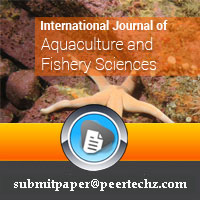
Article Alerts
Subscribe to our articles alerts and stay tuned.
 This work is licensed under a Creative Commons Attribution 4.0 International License.
This work is licensed under a Creative Commons Attribution 4.0 International License.
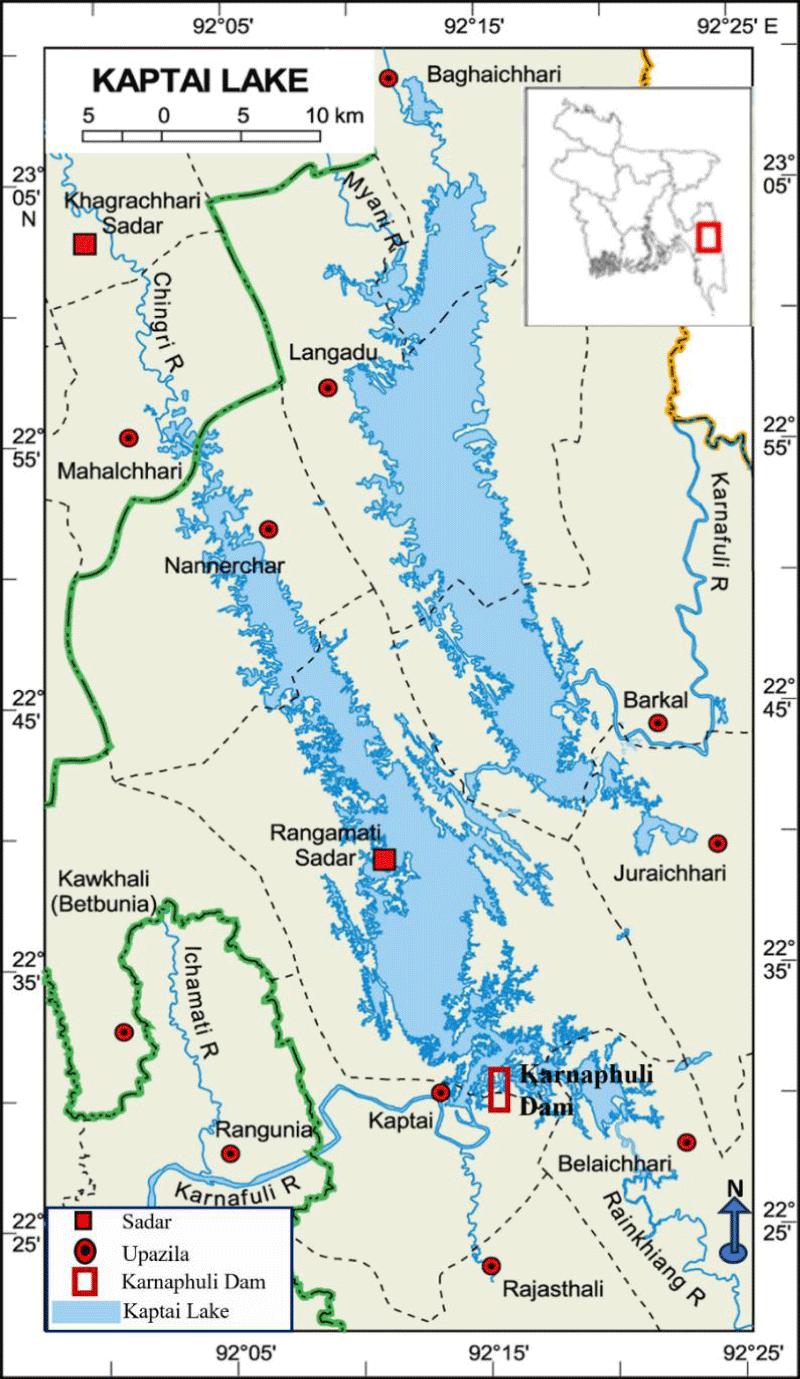
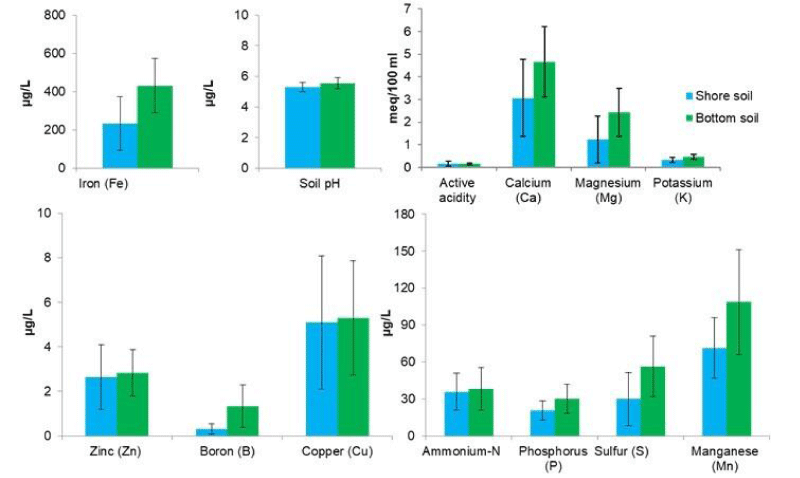
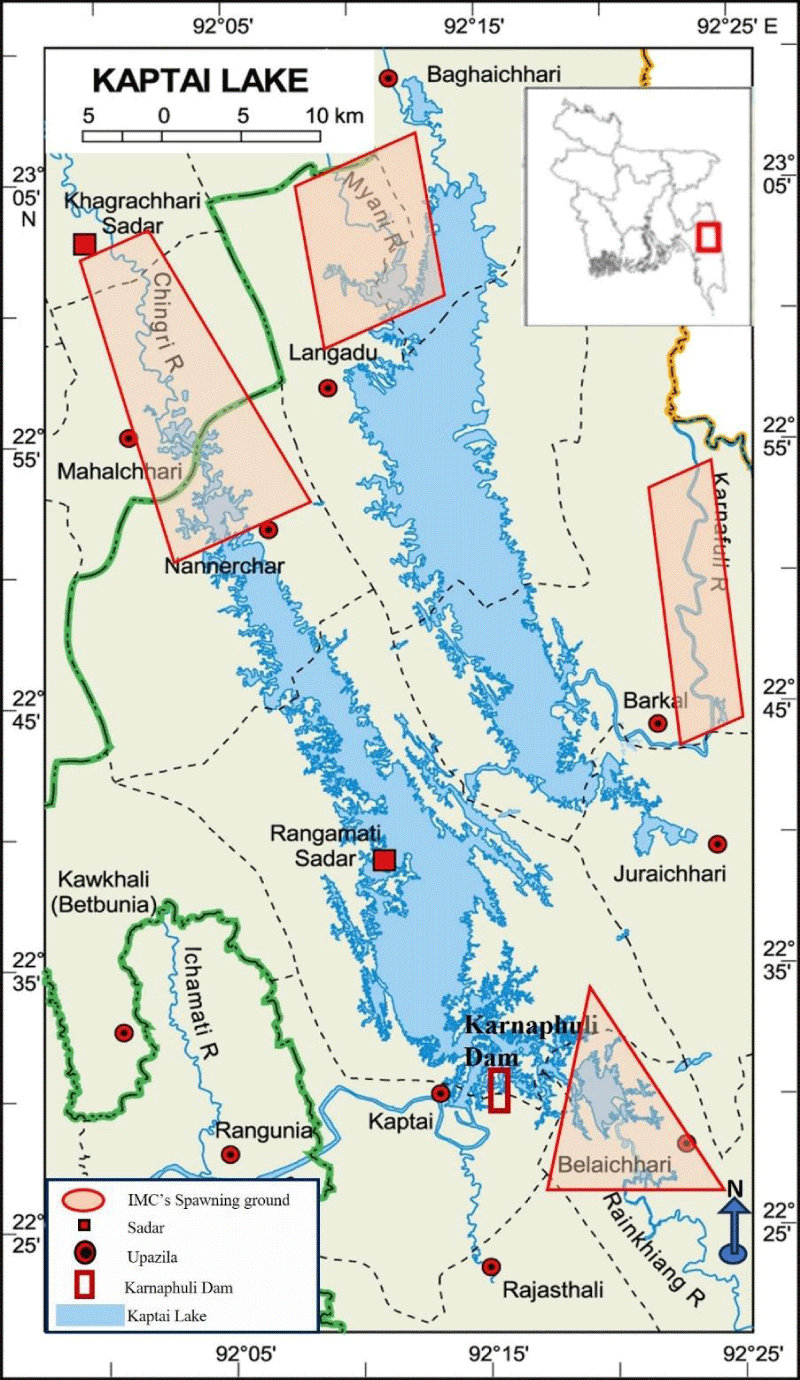
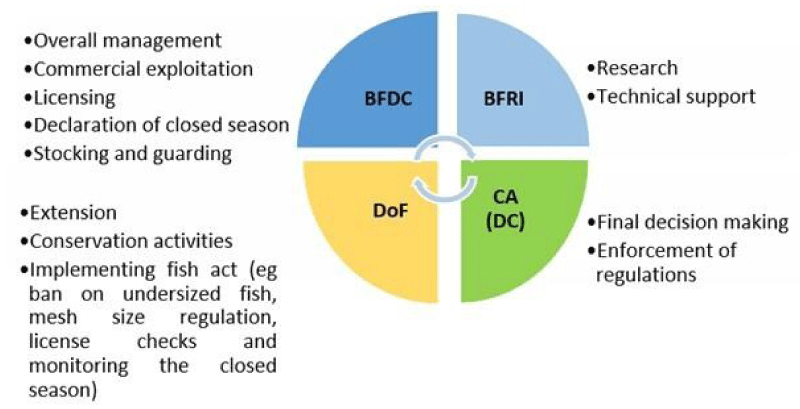
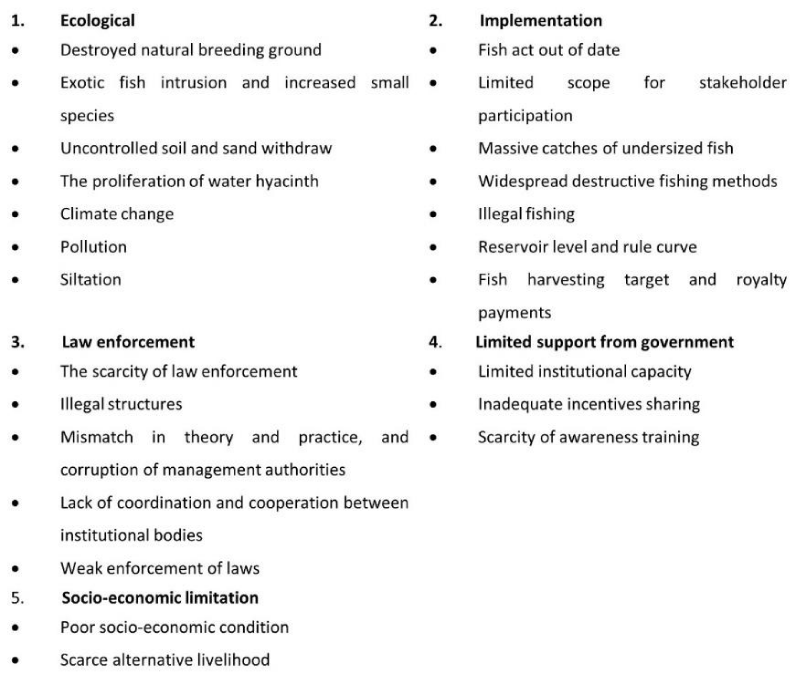
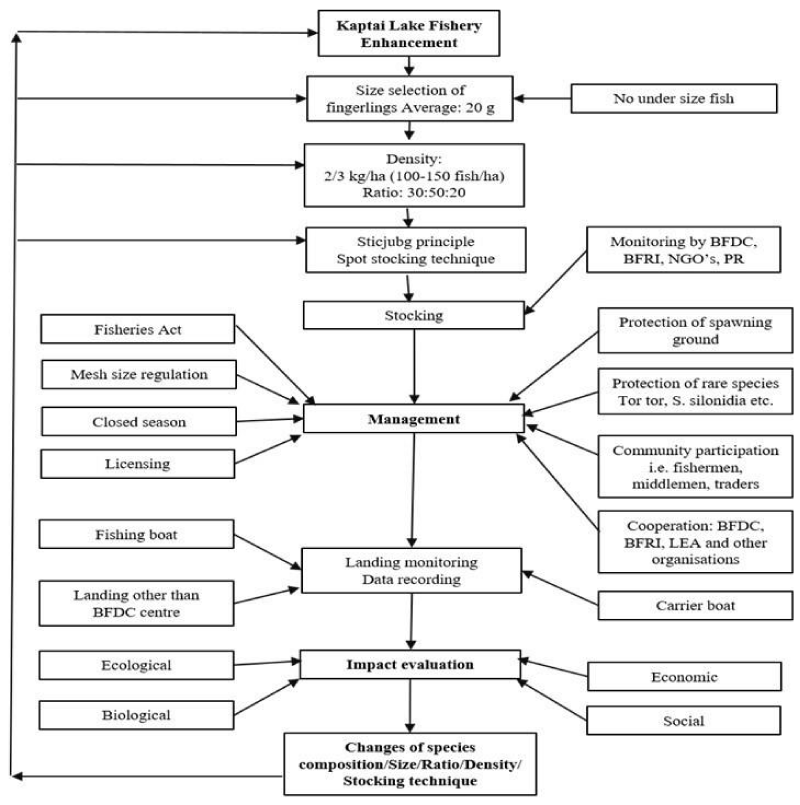

 Save to Mendeley
Save to Mendeley
